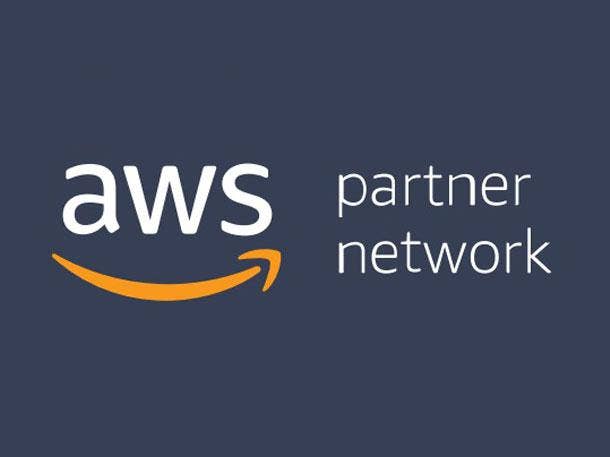AWS Introduces Five Paths In Updated Partner Program
‘We want to introduce with this a simpler model that offers partners more flexibility to engage with us,’ Barbara Kessler, AWS’ global partner programs leader, tells CRN.

Amazon Web Services has revealed a major overhaul to its partner program, retiring the consulting and technology partner types and introducing five paths for partners to streamline the program, simplify engagement and expand partner access to benefits.
Partners can enroll in multiple paths, which officially launch Jan. 31, Barbara Kessler, global partner programs leader of Seattle-based AWS, told CRN.
“We want to introduce with this a simpler model that offers partners more flexibility to engage with us,” Kessler said. “The model is no longer mutually exclusive by type. A partner could participate in one path or as many paths as relevant to their business.”
[RELATED: Channel Chief Doug Yeum: AWS Eyeing New Partner ‘Paths’]
The five paths are for hardware, services, training, distribution and software—which is the renamed “ISV partner path” that launched last year for independent software vendors, according to AWS.
Partners that develop hardware devices that work with AWS will join the hardware path. The services path is meant for partners that deliver consulting, professional, managed and value-add resale services. The training path is for partners that sell, deliver or incorporate AWS training into their offerings.
For partners that recruit, on-board and enable business to resell and develop AWS products and services, the invite-only distribution path is for them.
AWS may unveil new paths as trends develop and capabilities evolve, Kessler said. Partners can expect to see more differentiated designations become available over time.
Companies that register with the AWS Partner Network receive a dedicated partner portal, training discounts, business and technical enablement content, programs and benefits, according to the company.
Outgoing AWS Channel Chief Doug Yeum hinted at the new paths in an interview with CRN earlier this year.
The Amazon Partner Network includes 100,000-plus partners in 150-plus countries. More than 50 partners join the network every day, Kessler said.
Partners saw hundreds of thousands of opportunities in 2021, representing more than double the number of opportunities shared with partners year over year. AWS also saw about four times the number of partner-led migrations year over year, she said.
Tim FitzGerald, vice president of global infrastructure-as-a-service at Irvine, Calif.-based distributor Ingram Micro, told CRN that he likes the revamped AWS partner program and believes it should help partners deepen their AWS practices.
AWS’ recent investments reflect how the company’s leadership see the channel as a way to continue scaling its offerings, FitzGerald said.
“Today, they see the channel as a strategy accelerator,” he said.
Partner Path Breakdown
Each partner path has multiple stages, with partners earning new benefits as they move along the path and their progression is visible in their partner portals. AWS has also redesigned the badges partners receive and can display on their own websites, Kessler said.
The paths start with registration. Depending on the selected path or paths, partners will already receive access to some AWS partner tools such as SaaS Factory tooling, discounts on training, Blueprints and Quick Starts—automated reference deployments built by AWS solution architects and partners.
After the registration stage is enrollment, where partners choose the path or paths that apply to their business. Partners are next confirmed by providing billing information for the annual Amazon Partner Network fee. That fee will remain the same after the paths launch, Kessler said.
Following registration, partners go through validation. Validation varies for the different paths. Hardware path participants can complete new device qualification assessments, for example, while software path participants complete foundational technical reviews. The portals will also provide warnings before validations expire, Kessler said.
Based on partner and customer input, AWS will keep tiers for the services and training paths, Kessler said. The services path offers Select, Advanced or Premier tiers. The training path offers select training or advanced training tiers.
Once validated, partners can get listed in the internal partner discovery portal used by sellers and the Partner Solutions Finder that any customer can use.
After the validation stage is differentiation, where partners can gain a competency or partner program designation, for example. Partners at this stage can gain market development funds, increased visibility for co-selling, prioritization in search tools and other benefits, Kessler said.
“We offer a lot of programs to partners, and we think that‘s actually really important because our partners do a lot of different things,” Kessler said. “Customers are looking for exponentially growing use cases and the partners who can help them address that. So it’s important that we continue to offer new designations, new differentiation programs, other types of resources to partners. But equally important is that we make it easier for partners to navigate through them and find what’s most relevant to them.”
Some elements from the previous version of AWS’ partner program will carry over, Kessler said.
“Our partners will find as they participate in paths, they‘re not going to lose any of the badging that they’ve already earned, any designation benefits, those who remain intact and translate to the new model because we think that continuity and consistency and partners knowing what to expect and win is critically important,” she said.
Before the January launch of the five paths, Kessler said AWS partners should update their Amazon Partner Network company profiles and look for invites to relevant PartnerCast webinars on the paths.